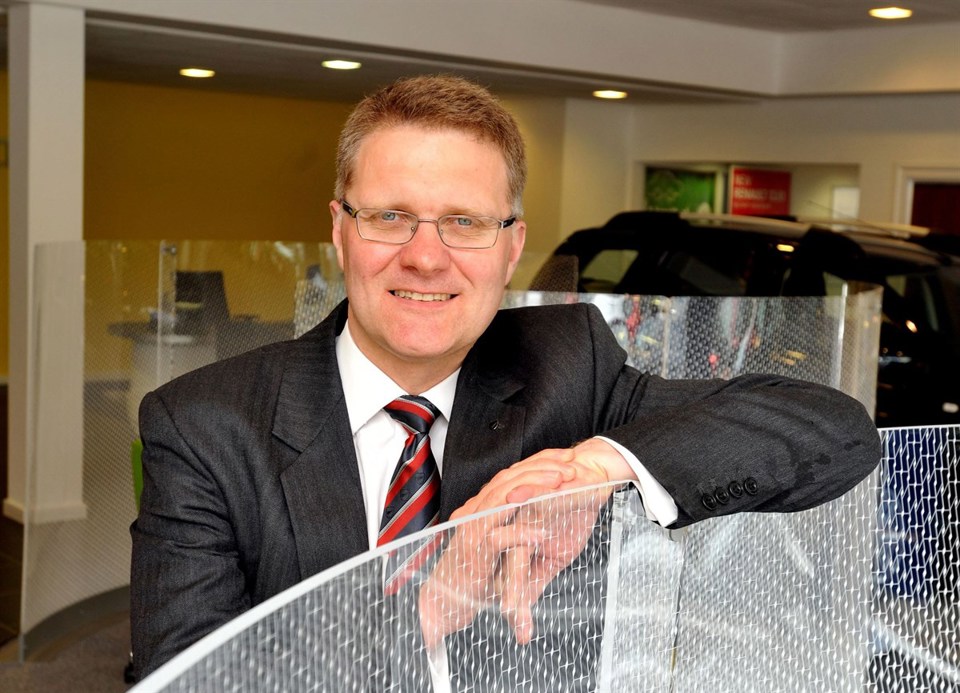By Robert Forrester, Vertu Motors chief executive
This December, it is 55 years since first the motorway was opened; the Preston by-pass which later became the M6.
At the time the environment was not a top priority; people certainly didn’t feel guilty about wanting a car and the independence it gave them. Back then cars that did fewer than 30 miles per gallon, emitted lead in their fumes and nobody had heard of a diesel particulate filter.
In the late 70s, the green movement became active and car drivers were made to feel guilty for the way their cars polluted our world. But today, life is different; the tables are beginning to turn on the motor car’s eco-critics.
In 2013, new car owners can honestly claim to be environmental champions. They can bask in the knowledge that the modern motoring is one of the most environmentally friendly ways of getting from place to place.
Let’s consider the environmental impact of building and selling vehicles. A huge proportion of the mass of a typical modern car is made from recycled or sustainable materials. Ford is an excellent example of how the industry has changed its habits and is building with the environment in mind. Its new vehicles are at least 85 percent recyclable and are built using renewable materials.
Examples of sustainable materials in its cars include bio-based polyurethane foam on the seat cushions, seatbacks and headliners. Globally, there are two million Ford vehicles on the road today with bio-foam seats, equating to a reduction in petroleum oil usage of about 1.5 million pounds weight.
Car under-body systems can be made from recycled resins such as detergent bottles, tyres and battery casings. Parts include aerodynamic shields, splash shields and radiator air deflector shields. Globally, this means Ford has saved between 25 and 30 million pounds weight of plastic from landfills.
Motor cars are among the most recycled consumer products in the world. According to the US Environmental Protection Agency, more than 95 percent of all end-of-life vehicles are processed for recycling – compared to 52 percent of all paper and 31 percent of all plastic soft drink bottles.
Next let’s turn to the day to day operation of a motor vehicle compared to other forms of transport. The big environmental downer has always been pollution caused by fuel emissions. One of the most popular new cars we sell is the Fiat 500, a trendy, fun, small car. The carbon footprint for driving a Fiat 500 from Newcastle to London (283 miles) is 0.05 tonnes of CO2, the same as that used on the same journey by a bus, while an economy class seat on a plane is 0.07 tonnes.
In the last 12 years, average CO2 emissions per km for all new cars has fallen by 26.5% from 181 gm/km to 133gm/km. By 2020, the average new car will have seen a 45.7 per cent reduction in CO2 emissions, since year 2000.
There are many buses travelling around the UK that are not full, quite often they are nearly empty. The energy taken to propel heavy vehicles with comparatively poor fuel consumption needs to be contrasted to the energy taken to propel smaller, lighter, energy efficient cars. In America, according to the Department of Energy’s Transportation Energy Data Book, in 2010 transporting each passenger one mile by car required 3447 BTUs of energy, (remember the average American car is often less fuel efficient than the average car in the UK).
The same study found that transporting each passenger a mile by bus required 4118 BTUs, using this assessment bus travel is less green. In fairness rail transit was better, at 2520 BTUs per passenger mile, but the costs are now prohibitively expensive.
In terms of fuel used per year, the popular and trendy Fiat 500 multi jet travelling 12,000 miles will cost just over £950; a season ticket on many South East rail routes will cost in excess of £3,000, and even in London an annual ticket for the underground, at £784, is considerably more in terms of annual miles travelled.
Of course there are other costs to owning a car, such as the purchase price and insurance, but there are additional costs for other forms of transport too. The cost we pay through our income tax for subsidies should be added to the cost of public transport.
Environmental levies are everywhere, from our electricity bills and gas bills to the carbon levies in manufacturing affecting the price we pay for everyday goods. The price of protecting the environment is escalating and is felt in everybody’s pocket. However, the motor industry has been the first sector to truly get ahead of regulation and produce products that meet concerns at a cost we can now afford.
When my children are old enough to drive I will be able to say with confidence that choosing to buy a car is a rational, ethical and sustainable decision for young people who care about the world we live in.
Modern technology is rendering old environmental arguments useless. The real defender of the environment is a person that gets from A to B quickly and cheaply in a vehicle that was built in a sustainable way and operated without choking up our atmosphere. Increasingly that person will be driving a new car on the motorway system that we had the foresight to create in 1958.

















Del - 29/11/2013 19:31
Message for Robert Forrester, Vertu Motors chief executive Its a pity complaint messages are removed from your Facebook page and your depot manager states that if you don't like the service or price you can go elsewhere. Great customer service !!!!!